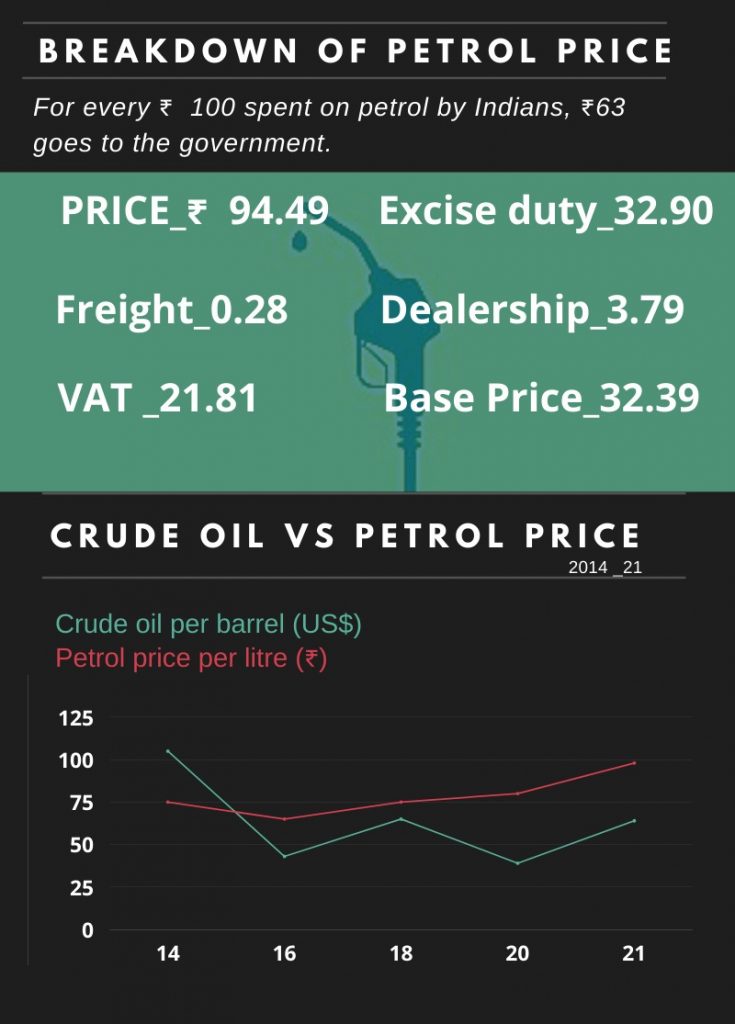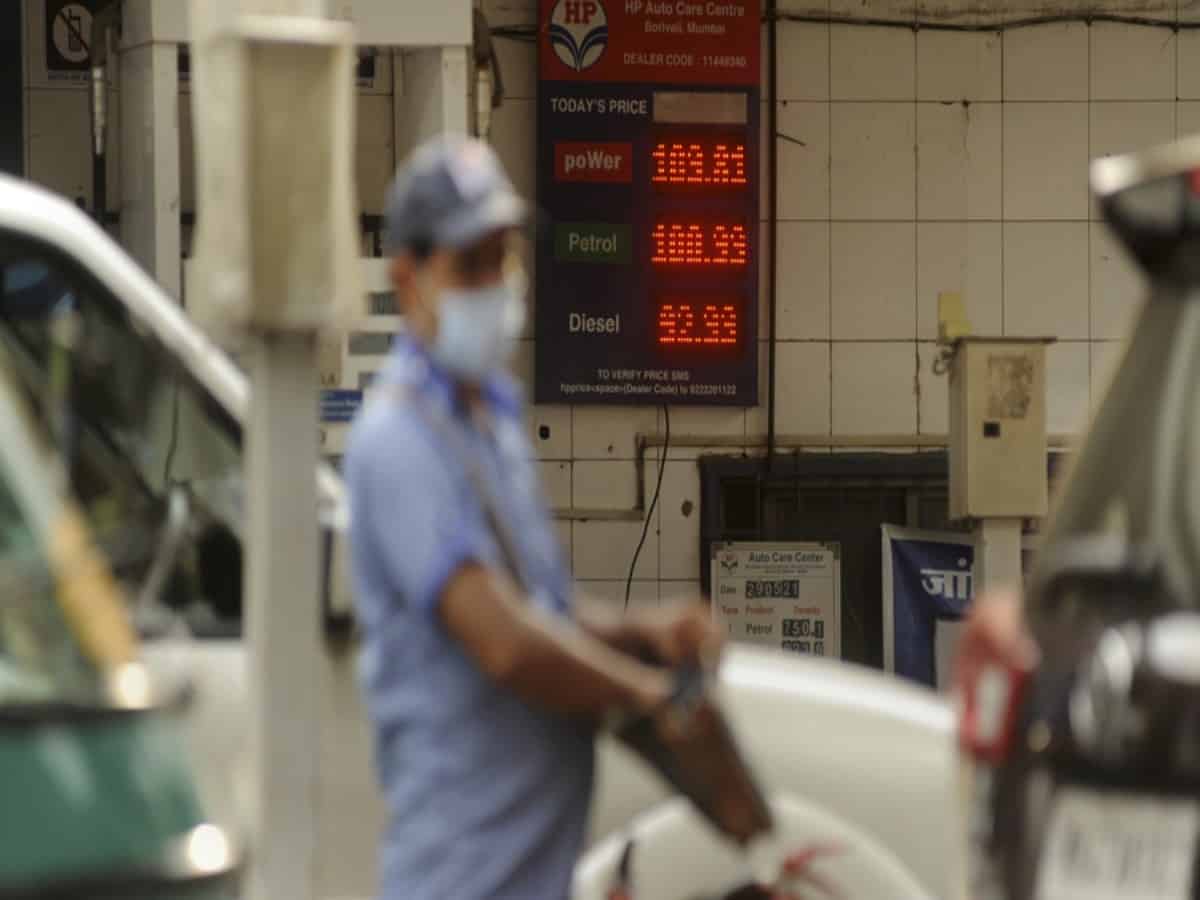Hyderabad: Telangana’s capital city earlier this month became the second metro city in the country to see petrol price crossing Rs 100 per litre mark. While it costs Rs 102.32 on Sunday, diesel too reaching closer to Rs 100 at Rs 96.90.
The fuel prices have been continuously rising since May, reaching its all-time high and breaching the Rs 100-mark in several major cities in India.
Most of the money that the buyer pays for fuel goes to the taxes of state and center governments. Hyderabad , Mumbai, Delhi , Kolkata are some of the major cities denting the consumer pocket.
The break-up of fuel prices
As on June 1, 2021, crude oil per barrel was trading around 70.67 USD per litre (₹32.39). But on the same day, petrol was sold at ₹94.49/ litre.
Why this difference? This spike in the prices account can be attributed to heavy taxes of state and center governments that include VAT of 30 per cent on petrol, excise duty of ₹32.9/litre, freight and processing charges ₹3.6/litre and dealer commission of ₹3.79/ litre.
To simply put, the buyer pays ₹63 as taxes for every ₹100 while buying petrol.

The union minister of petroleum and natural gases Dharmendra Pradhan, however, justified the taxes levied.
“The main two reasons for the spike in petroleum prices are the upward trajectory in crude oil globally due to the increase in demand. We have to import 80 per cent of the oil we consume. Secondly, due to COVID-19, the centre and states have to do other development work for which they have to collect taxes,” he said.

While addressing the media a few days back, he even said that the government is saving money for the COVID-19 welfare schemes.
“I accept that current fuel prices are problematic for people, but be it the central/state government, over ₹35,000 crore is being spent on vaccines in a year. In such dire times, we are saving money to spend on welfare schemes,” Pradhan said.
He even blamed the former government and said, “Congress had left oil bonds worth crores for repayment, which is why the current Bharatiya Janata Party-led government has to pay both its interest and principal price.This is also a big reason for the rise in fuel prices.”
Comparative analysis
It is important to note that the crude oil rate per barrel in 2021 is 65 USD per barrel, which is much less compared to 2014 when the cost was 105 USD. The base price of petrol too decreased 43 per cent to ₹26.71 (in December 2020), as against ₹47.12 in May 2014.
While the price in India breached the bar of ₹100, the petrol price in Nepal on January 25 was 110 NPR/litre (₹68.89). In Sri Lanka, the petrol rate as of January 25 was reported as 161 LKR/litre (₹60.62).

So, the rise in fuel prices is merely a policy decision by the central government to keep the excise duty and VAT high. The upward movement of fuel prices on a daily basis is worrying and denting the consumer, leading to inflation.

